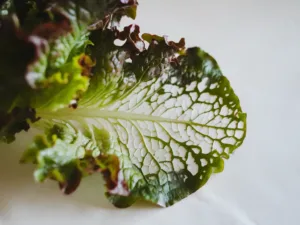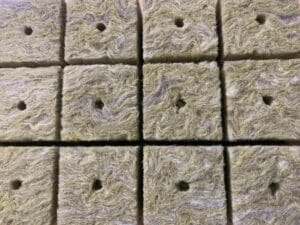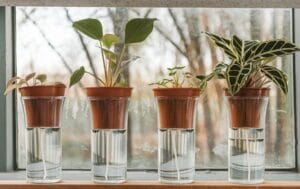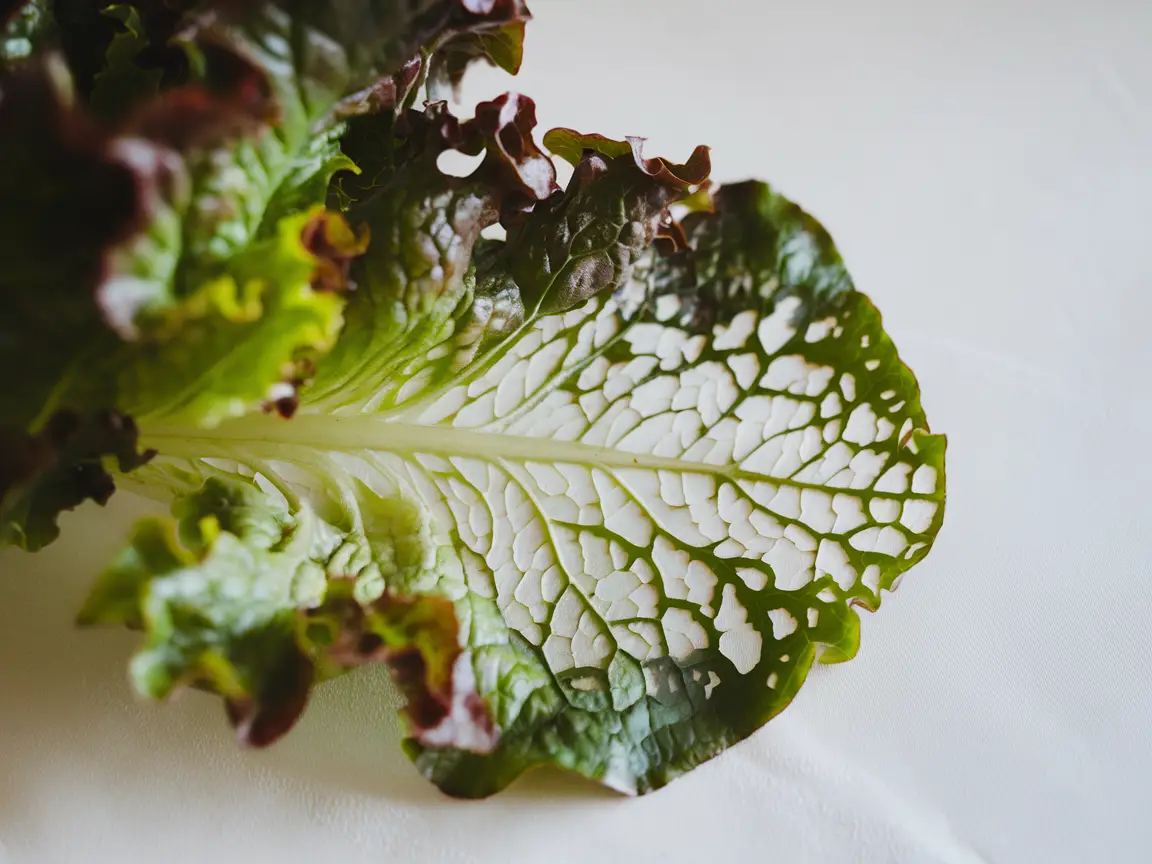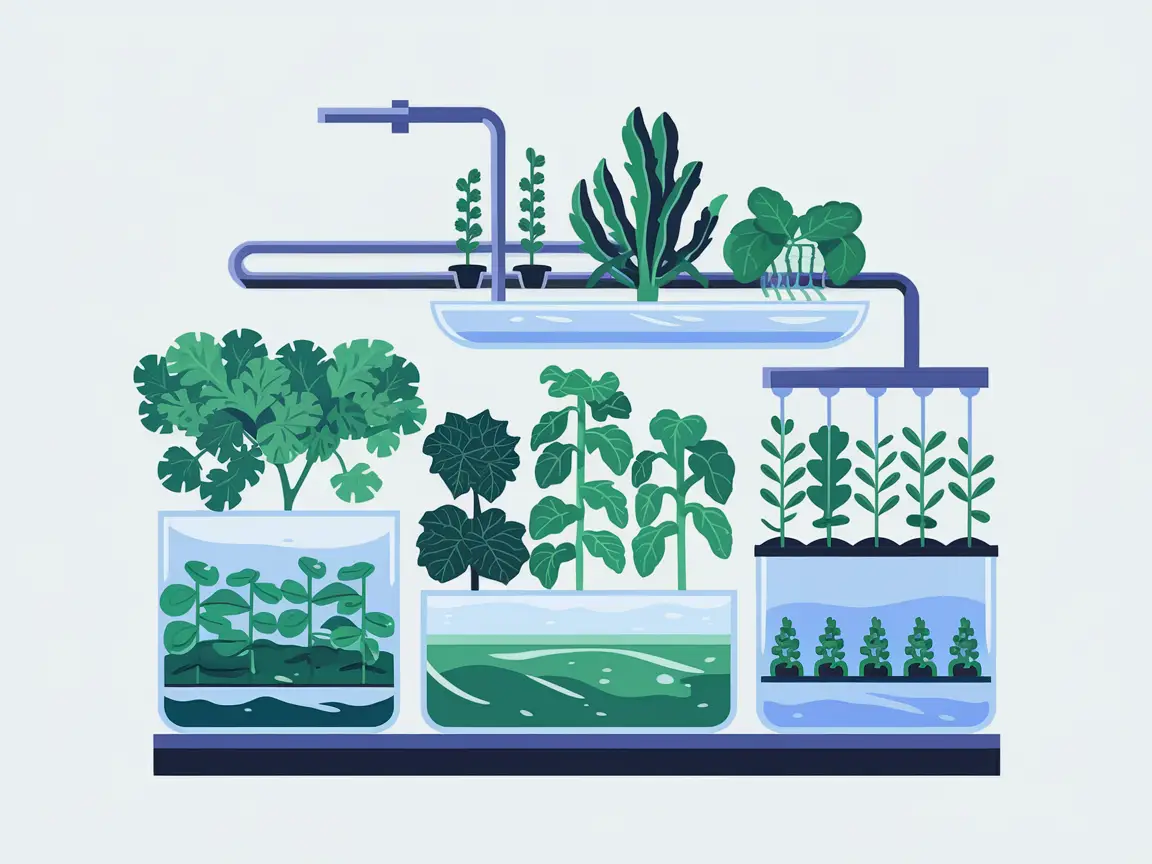What is Hydroponics?
The term “hydroponics” comes from Greek and literally means “water work” (hydro = water, ponos = work). [Source] Hydroponics is an innovative method of plant cultivation that does not use soil. Instead, plants grow in a nutrient-rich water solution.
Unlike traditional gardening, plants grow in a controlled system where they don’t have to extract nutrients from the soil. This precise control over growing conditions allows plants in a hydroponic system to grow faster and produce higher yields than in traditional garden systems.
The Most Common Hydroponic Systems:
- Nutrient Film Technique (NFT) – A thin layer of nutrient-rich solution continuously flows over the plant roots.
- Deep Water Culture (DWC) – The plant roots hang in an oxygenated nutrient-rich water solution.
- Ebb and Flow System – The plant bed is periodically flooded with the nutrient solution and then drained.
- Wick System – A wick passively transports the nutrient solution from a reservoir to the plant.
- Drip System – The nutrient solution is dripped directly onto the base of each plant.
- Aeroponics – The plant roots hang in the air and are regularly sprayed with a nutrient-rich solution.
Why Choose Hydroponics?
- Water Efficiency
Hydroponic systems use up to 90% less water! - Faster Plant Growth
Plants grow faster due to direct access to optimal nutrients and conditions. - Less Space Needed
Hydroponic systems take up less space as plants can grow closer together, especially in vertical systems. - Control Over Nutrients
Growers can adjust the nutrient composition to provide plants with optimal growing conditions.
5 Steps to Your Own Hydroponic Garden
Are you already excited to start eating your own healthy vegetables? The following 5 steps will guide you directly there:
1. The Right System
For beginners, Deep Water Culture with its special form, the Kratky system, is best.
A deep water culture system consists of an opaque water reservoir with net pots, where the plant roots hang directly into the nutrient-rich solution. The Kratky system is even simpler, as it doesn’t require a pump. The plant roots hang in a nutrient solution that is gradually used up until harvest.
Both systems are cost-effective, easy to set up, and low maintenance.
2. The Right Hydroponic Fertilizer
In hydroponics, conventional soil fertilizers are not suitable. However, there are many hydroponic fertilizers available.
For beginners, a one-part fertilizer is recommended. It covers all necessary nutrients and is easy to use.
3. The Right Growing Medium
The growing medium’s main role is to support the plant. Be sure to choose an inert medium that provides stability to the roots and allows good aeration without contributing any nutrients of its own.
Special rock wool is optimal for starting plants from seeds. Once the seedling has rooted in the rock wool, you can place it in the net pot and, if necessary, secure it with clay pellets.
4. The Right Lighting
Good lighting is crucial for plant growth in hydroponics.
LED lights are ideal because they are energy-efficient and offer the right light spectrum for plant growth.
Ensure the plants receive 12-16 hours of light each day.
Position the lights at the correct height and adjust as the plants grow for optimal results.
5. Choosing the Right Plants
For beginners, resilient and fast-growing plants are ideal for hydroponics.
Choose plants like lettuce, spinach, or herbs, which are low-maintenance and quickly yield produce.
These plants are perfect for beginners as they are tolerant of nutrient and temperature fluctuations.
With these plants, you’ll quickly gain success and experience in hydroponic cultivation.
Bonus: DIY or Buy a System?
If you enjoy hands-on projects and customization, a DIY hydroponic system might be just right for you.
It costs less and teaches you a lot about the technology and functionality.
However, it takes some time, skill, and planning. For those who like to tinker and experiment, this is a rewarding option that also offers a deeper understanding of hydroponics.
If you prefer to start right away with minimal effort, a ready-made hydroponic system is ideal for you.
These systems are user-friendly, fully equipped, and come with instructions to make it easy to get started. For beginners or those short on time, this is the more convenient and easier solution.
No matter which option you choose, both paths lead you into the exciting world of hydroponics. Pick what best suits you and your needs, and look forward to healthy, home-grown plants! Delicious!


